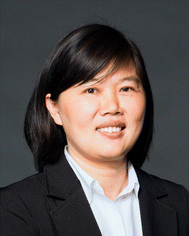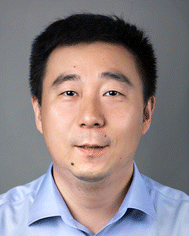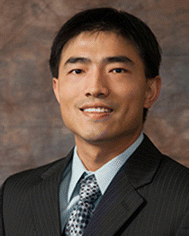Introduction to new horizons in materials for energy conversion, optics and electronics
Jinlan
Wang
 *a,
Yuanjian
Zhang
*a,
Yuanjian
Zhang
 *b,
Seeram
Ramakrishna
*b,
Seeram
Ramakrishna
 *c and
Guihua
Yu
*c and
Guihua
Yu
 *d
*d
aSchool of Physics, Southeast University, Nanjing, China. E-mail: jlwang@seu.edu.cn
bSchool of Chemistry and Chemical Engineering, Southeast University, Nanjing, China. E-mail: Yuanjian.Zhang@seu.edu.cn
cCenter for Nanotechnology and Sustainability, College of Design and Engineering, National University of Singapore, Singapore. E-mail: seeram@nus.edu.sg
dMaterials Science and Engineering Program and Walker Department of Mechanical Engineering, The University of Texas at Austin, Austin, USA. E-mail: ghyu@austin.utexas.edu
Abstract
In conjunction with the Emerging Investigator Forum celebrating the 120th anniversary of Southeast University, we herein present a collection of articles focused on the energy conversion, optics, and electronics applications of (nano)materials.
Renewable energy systems have gained popularity due to climate protection and sustainability issues.1 However, the intermittency caused by natural renewable energy sources disrupts the balance of the energy system and can put considerable strain on electrical systems.2 Thus, such artificial systems should be carefully envisioned, strategized, produced, optimized, and monitored to keep them highly efficient, safe, stable, and cost effective.
Energy materials, engineered at nanometer length scales, present unique physicochemical properties that make them more suitable to be explored in diverse manners, paving the way towards renewable energy systems with continuous breakthroughs.3–5 Meanwhile, theoretical calculations, such as machine learning methods, have been widely applied to solve complex problems.6,7 This collection focuses on energy conversion, optics, and electronic applications of (nano) materials and provides an overview of the most impactful experimental approaches and theoretical methods for energy conversion and storage, intending to connect different communities and identify common challenges in the field.
Part of the Editor’s collection is an exquisite study by Qichong Zhang, Kuibo Yin, Litao Sun and coworkers that provides a promising strategy to rationally construct high-performance flexible vanadium-based cathodes for next-generation wearable aqueous zinc-ion batteries (https://doi.org/10.1039/D2NH00349J). They fabricated 3D geometrically-promoted N-doped carbon/defect-rich V2O5−x·nH2O (DVOH@NC) fibrous cathodes via an in situ electrochemical activation strategy. The DVOH@NC cathodes brought unexpected electrochemical performance improvements with their impressive capacity (711.9 mA h cm−3 at 0.3 A cm−3) and long-term durability (95.5% retention after 3000 cycles). Moreover, the oxidative formation of the DVOH@NC host with enhanced electronic/ion conductivity and its reversible electrochemistry were investigated using insightful electrochemical tests and density functional theory. The assembled deformable fibrous battery with remarkable flexibility demonstrated great advantages in the solar-driven self-powered system and smart wearable electronics.
Semiconductors, especially one-dimensional TiO2 nanofibers fabricated by electrospinning, have received considerable attention in the past two decades, for a variety of basic applications toward energy conversion and storage. However, their safe use and easy recycling are still hampered by their inherently subpar mechanical performance. Part of this collection is a contribution by Yunqian Dai and coworkers that demonstrates a proof-of-concept for the continuous and controlled production of flexible oxide nanofibers, hastening the transition of TiO2-based nanomaterials from the fab to the lab (https://doi.org/10.1039/D2MH01255C). They used Al ions to soften rigid TiO2 molecules and regulate the dynamics of TiO2 crystallization, growth, and aggregation, strengthening electrospun TiO2 nanofibers from the molecular to macro scale. The modified nanofibers had the highest tensile breaking strength (2.24 MPa) and highest anatase content (47 wt%) ever reported after being calcined at 900 °C. More interestingly, the authors dynamically visualized the oriented deposition of amorphous Al species, which significantly delays the sintering of TiO2 nanocrystals, at the grain boundary of TiO2 nanocrystals through in situ TEM observation, for the first time. This finding provides essential insight for the rational design of thermally stable oxide nanomaterials. With the aid of origami art for the first time, flexible TiO2 nanofibrous membranes were constructed into high-temperature resistant microreactors. It was endowed with a PM2.5 filtration efficiency of 99.97% after 300+ minutes of use and is able to effectively degrade adsorbents and therefore become a regenerated system by taking full advantage of residual heat and/or sunlight irradiation. These results provide new insights for the functionalization of semiconductors with reliable thermal, mechanical, and chemical stabilities.
These are just a couple of the many recent papers published in this themed collection focused on materials for energy conversion, optics and electronics. We hope that you will find them an interesting read!
References
- T. Bolsen, Nat. Energy, 2022, 7, 1003–1004 CrossRef.
- J. M. Gonzalez, J. E. Tomlinson, E. A. M. Ceseña, M. Basheer, E. Obuobie, P. T. Padi, S. Addo, R. Baisie, M. Etichia, A. Hurford, A. Bottacin-Busolin, J. Matthews, J. Dalton, D. M. Smith, J. Sheffield, M. Panteli and J. J. Harou, Nat. Sustainable, 2023, 6, 415–427 CrossRef.
- H. Lu, J. Tournet, K. Dastafkan, Y. Liu, Y. H. Ng, S. K. Karuturi, C. Zha and Z. Yin, Chem. Rev., 2021, 121, 10271–10366 CrossRef CAS PubMed.
- X. Hu, D. Zuo, S. Cheng, S. Chen, Y. Liu, W. Bao, S. Deng, S. J. Harris and J. Wan, Chem. Soc. Rev., 2023, 52, 1103–1128 RSC.
- H. Hosono and M. Kitano, Chem. Rev., 2021, 121, 3121–3185 CrossRef CAS PubMed.
- Z. Yao, Y. Lum, A. Johnston, L. M. Mejia-Mendoza, X. Zhou, Y. Wen, A. Aspuru-Guzik, E. H. Sargent and Z. W. She, Nat. Rev. Mater., 2022, 8, 202–215 CrossRef PubMed.
- C. Lampe, I. Kouroudis, M. Harth, S. Martin, A. Gagliardi and A. S. Urban, Adv. Mater., 2023, 2208772 CrossRef CAS PubMed.
| This journal is © The Royal Society of Chemistry 2023 |


![[thin space (1/6-em)]](https://www.rsc.org/images/entities/char_2009.gif) 000 total citations and a H-index of 70.
000 total citations and a H-index of 70.

